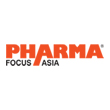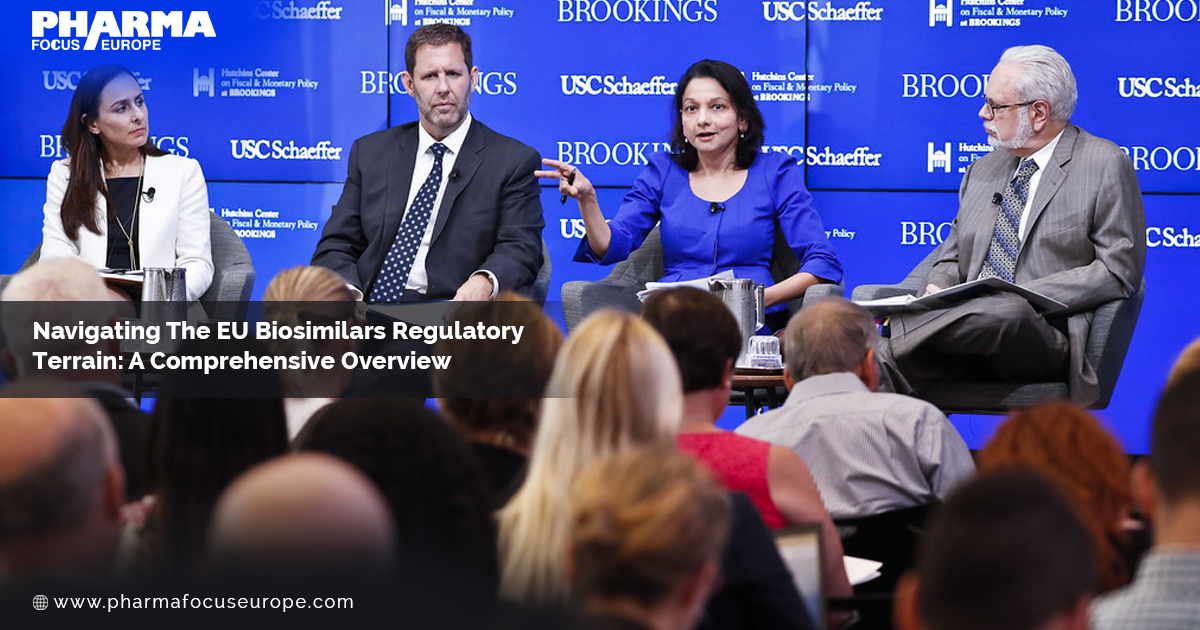How PBM's Transformed to Provide Easy Access to Prescription Drugs Post COVID 19

Strong8k brings an ultra-HD IPTV experience to your living room and your pocket.
“It's overwhelming to behold the significant transformation the PBM industry has undergone in the last decade. Fast forward to the present day, and all we hear is instant real-time access and a faster approach to solving problems, which sounds just amazing.” Ravi Iyer, Technology Executive—Big Data, Analytics, Cloud, and Digital at Elevance Health, Inc.
Adding to that, the global pandemic experience is the perfect example that led industry leaders to explore new opportunities and thrive on digital innovations. What we experience today is the miracle of that change – embracing a digital mindset.
Emerging technologies have redefined the modern healthcare landscape beyond our expectations, gearing towards digital–helping patients get affordable healthcare and providers boost patient experience using big data, predictive analytics, and artificial intelligence-powered tools.
In this article, we shed some light on the significant behind-the-scenes impact on drug spending and how PBMs strive to provide affordable patient care while responding to the change in entirely new ways.
PBM's Responding to the COVID Outbreak with New Policies
PBMs are part and parcel of the healthcare spectrum. They are integral in managing prescription drugs for large and small employers and other payers, enabling health insurers, including financing, distributing, pricing, shipping, and setting policies. In addition to this, PBMs determine how prescription medications are distributed, find measures to avoid drug shortages and supply disruptions, and fulfill the demand to stock up on prescription or over-the-counter medications.
[Forecasting and pricing simulations play a crucial role in the PBM industry. PBM leaders are on the verge of implementing new technological solutions to assist drug makers in complying with regulations and expedite medicine delivery, payments, and price negotiation by breaking down bottlenecks while streamlining their operations.]
Pharmacy Management: Enabling Policies to Achieve an Uninterrupted Supply Chain
Whether you agree or not, sometimes even a simple, manageable administrative task can devour more time. To reduce the administrative burden, PBMs have extended prior authorisations by 60 to 90 days for formerly approved prescriptions, eventually reducing time spent working on refills. PBMs have been taking every measure to ensure patient care is available during COVID-19, especially for patients with chronic conditions living in regions with shelter-in-place orders.
In light of this situation, PBMs have temporarily relaxed quantity and refill-too-soon policies, enabling patients with chronic conditions to access an additional 30 days of supply.
Patient Access: Rolling out 90-day-mail-order Pharmacy
Mail-order medications are relatively less expensive when compared to those purchased at a walk-in pharmacy. Many PBMs have initiated mail-order-delivery programs to help members with chronic conditions access medications right where they are and encourage signing up with their insurance company’s mail-order pharmacy. Mail-order pharmacies can be accessed 24/7 through websites and telephones. PBMs have successfully promoted these programs and noticed a 20 per cent increase in sign-up numbers for receiving 90-day-mail-order prescriptions.
As the price surge in specialty drugs continues to rise in the United States, providers, employers, and other government programs are adapting alternative pricing strategies. Value-based contracting is one such strategy where the pricing is predetermined based on patient outcomes (ex: patients suffering from hematological disorders and cancers). The new policy allows patients to receive a 90-day supply of certain specialty medications rather than the usual 30-day supply.
Supply Chain: Continuity of Care by Mitigating Supply Disruptions
It is essential to stick to rigorous storage measures, shipping, and handling standards, including temperature control and on-time delivery of mail-order medications, especially when demand and supply override each other (Ex: COVID-19 outbreak). All stakeholders in the prescription drug supply chain play a key role in balancing patient access and continuity of care. Due to social distancing practices, many PBMs have come forward to offer reliable access to prescription drugs (preferably home-delivery operations) at patients' convenience. PBMs that own pharmacies have seen a drastic increase in fulfilling patients’ on-demand services during the pandemic.
[Emerging Technologies: A Ray of Hope for the Changing Dynamics of the Pharma Industry]
Wearable and Digital Apps: A Boon to the PBM Industry to Easily Manage and Scale Patient Care
The shift from offline to virtual was phenomenal and instant during the pandemic. The concept, which seemed cloudy initially, has taken center stage. Wearable technology has proven to be a strong catalyst during the COVID-19 outbreak in providing better personalized clinical care for members. Online appointments, virtual consultations, and e-prescriptions have become a mandate.
For example, Wearable biosensors were used by diabetic patients during the lockdown to monitor glucose levels. CGMs, aka continuous glucose monitors, are wearable medical devices with microscopic sensors attached beneath the skin, typically on the upper arm or torso, and secured by a patch. Using this device, patients can keep track of their levels in real time and observe changes on their smartphones. And PBMs were momentous in providing better access to these devices.
Digital apps are already helping patients track their drug use and conveniently share their medication information with family and doctors on their phones, instantly. When it's time to take their medication, patients can opt to receive notifications on their phones as reminders. To ensure the patient places a new prescription order before running out, some apps even alert users when they are running low and need a refill.
Alternatively, doctors and caregivers can get information about insurance coverage through an integrated electronic prescription system. Patients can also use the system to determine if their insurance policies cover the drugs they have been prescribed. The documentation, including insurance coverage, is all checked and verified electronically, so there is no need for the patient to do anything else.
According to a survey, 75 per cent of patients are looking up the cost of medical procedures online.
62 per cent of patients said knowing their out-of-pocket expenses in advance of service impacts the likelihood of pursuing care.
Before receiving treatment, 49 per cent of patients said having clear information on expected out-of-pocket costs influences their decision to use a healthcare provider.
Big Data and Predictive Analytics in the PBM Space
“Predictive analytics has pushed all the limits of the PBM industry in exploring and predicting future events by analysing past and current data that have similar features. In short, the need of the hour for every PBM is to forecast the behavior and patterns of their customers; predict which patients will be hospitalized, which drugs will be in high demand; etc.; and provide personalized interventions if patients aren’t taking their medications as prescribed.” – Narasimha Reddy Nalamalapu, Technology Executive, Product Development, Analytics, and Cloud migration at Tetrasoft Inc
Identifying this crucial information will help PBMs accelerate the discovery of new drugs and also get insight into opportunities that harvest the best outcomes for both providers and patients.
For instance, pharmaceutical companies such as AstraZeneca, Bayer, Celgene, Janssen Research and Development, Memorial Sloan Kettering Cancer Center, and Sanofi – lately announced a new data-sharing initiative called Project Data Sphere. The companies have agreed to share historical cancer research data to aid researchers in the fight against the disease. With the analytics technology being provided by software vendor SAS, the database will be available online globally.
Another excellent example is the Xalkori drug. Pfizer pooled data from EMR (Electronic Medical Records), clinical trials, and genomic data to explore opportunities for “drugs for specific patient populations”. The company was successful in identifying a small subset of lung cancer patients who had a particular genomic defect – an ALK gene mutation. This insight helped Pfizer advance Xalkori specifically for lung cancer patients with the ALK gene mutation.
The Epitome of Data to Enhance the Member Experience!
Ingenio Rx ramped up an initiative called ‘proactive messaging to prescribers’ utilising EMR to get history tied to a member in terms of allergies, labs, encounters, previous visits, etc., And how?
From the data hub! Yes, you read that right. Data is the key to bringing a perfectly splendid member experience to the fore.
For Ex: Gathering insights by utilising loyalty card programs from grocery stores and other retailers. The measure not only helps to understand and fetch data but also helps in predicting the purchasing behavior of a large group of Americans. Another easy and most sought-after method is gathering insights from connected devices, sensors, and wearable data. They not only deliver real-time data, but these devices also go a notch above the rest in sharing other vital information about the patients too.
Key highlights:
Make the best decision for a member, provider, or prescriber by leveraging third-party data.
Claims data will help with the historical aspect of prescriptions and any preference for certain pharmacies tied to geography or habits.
PBMs and payers strongly believe that bringing predictive analytics to the fore will reduce high costs for treatments such as cardiovascular disease, cancer treatments, and much more. For instance, CVS augmented the Transform Diabetes Care program, which focused on early detection, prevention, and managing hypertension, a common comorbidity for people with diabetes. The Transform Diabetes Care Program started in 2017 and was successful in lowering HbA1c levels by an average of 1.2 percent in just six months. And over 50 per cent of program participants with uncontrolled diabetes transitioned to a managed state. The new program leverages the analytics platform of the CVS Health Engagement Engine to identify any potential at-risk members.
Likewise, PBMs’ value-based programs aided healthcare professionals in recommending the most suitable treatment options and delivering better medication adherence and improved compliance at reduced costs.
The future of the PBM industry seems to be very interesting and promising – adding precision to the delivery of personalized patient care by leveraging data and optimising drugs and mail-order.
Now, here is the catch: PBM companies have the chance to strike the right balance across consumer expectations, company requirements, and compliance that vary depending on the line of business while aiming to increase the transparency of the drug schedules on formularies.
Visit now: https://www.pharmafocusasia.com/articles/how-pbms-transformed-to-provide-easy-access-to-prescription-drugs-post-covid-19
Note: IndiBlogHub features both user-submitted and editorial content. We do not verify third-party contributions. Read our Disclaimer and Privacy Policyfor details.







